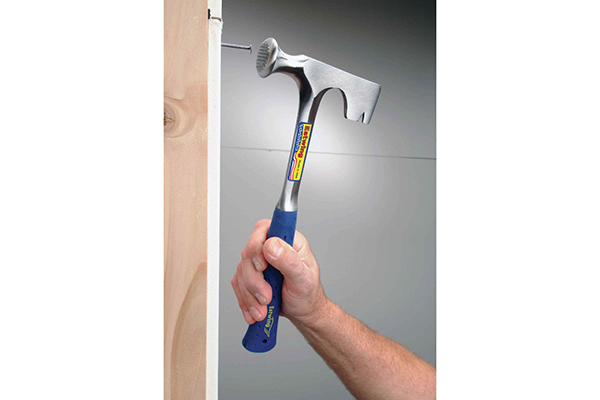The Drywall Hammer: A Tool for the Everyman Craftsman
In the realm of home improvement and construction, the drywall hammer stands as an indispensable tool, employed for tasks ranging from hanging drywall to driving nails and finishing touches. While it may appear similar to a traditional hammer, the drywall hammer possesses unique characteristics tailored for its specific purpose. Embark on an exploration of this versatile tool, uncovering its defining features and applications.

Unveiling the Anatomy of a Drywall Hammer
The drywall hammer, also known as a drywall finishing hammer or drywall nailing hammer, is a specialized tool designed for drywall installation and finishing. Its distinctive features include:
-
Lightweight Design: Unlike traditional hammers, drywall hammers are lightweight and compact, typically weighing around 16 ounces. This reduced weight minimizes fatigue and hand strain during prolonged use.
-
Flat Striking Face: The drywall hammer's striking face is flat and smooth, preventing damage to the drywall surface during nail driving.
-
Curved Handle: The hammer's handle is curved, providing a comfortable grip and allowing for precise nail placement.
-
Magnetic Nail Holder: Many drywall hammers feature a magnetic nail holder, conveniently keeping nails within reach and preventing them from rolling away.
-
Shock Absorption: Some drywall hammers incorporate shock-absorbing features to reduce vibration and hand fatigue.
Exploring the Applications of Drywall Hammers
The drywall hammer serves a multitude of purposes in drywall installation and finishing:
-
Drywall Hanging: The drywall hammer is used to drive nails into drywall, securely attaching the drywall sheets to framing studs.
-
Nail Finishing: The flat striking face prevents damage to the drywall surface, allowing for precise nail placement and a smooth finish.
-
Nail Set-Up: The hammer can be used to drive nails below the drywall surface, creating a seamless finish that can be easily painted or covered with joint compound.
-
Dimple Reduction: The hammer can be used to tap on drywall to eliminate dimples or imperfections, ensuring a flat and even surface.
-
Finishing Touches: The hammer can be used to drive finishing nails into trim, moulding, and other finishing materials.
Comparing Drywall Hammers to Traditional Hammers
While both drywall hammers and traditional hammers share some similarities, they exhibit distinct differences:
-
Purpose: Drywall hammers are specifically designed for drywall installation and finishing tasks, while traditional hammers are versatile tools for construction, carpentry, and general use.
-
Striking Face: Drywall hammers feature a flat striking face to prevent drywall damage, while traditional hammers have a curved face for driving nails into wood.
-
Weight: Drywall hammers are lightweight to minimize fatigue, while traditional hammers are typically heavier for driving larger nails.
-
Handling: Drywall hammers have curved handles for comfort and precision, while traditional hammers have straight handles for general purpose use.
Conclusion
The drywall hammer stands as an essential tool for those embarking on drywall projects, offering a combination of lightweight design, a flat striking face, and a curved handle for comfortable and effective nail driving. Understanding its unique characteristics and applications empowers individuals to tackle drywall installation and finishing tasks with confidence and precision.
Post time: 11-30-2023





